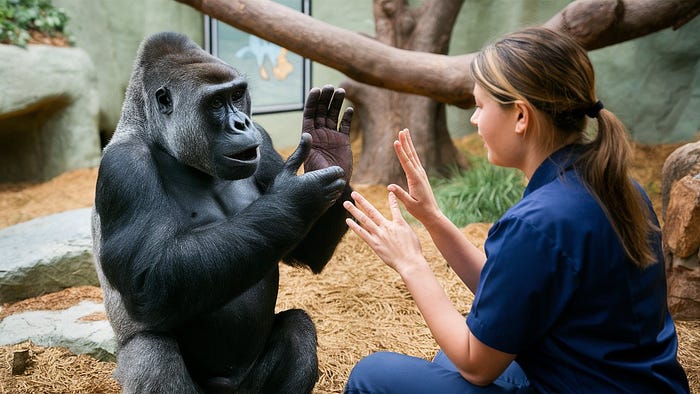Funny animals and the possibility of teaching them through training

Funny animals and the possibility of teaching them through training
Animals, in their unique and funny ways, always bring joy to our lives. Among these animals, monkeys are among the most intelligent and capable of learning, making them ideal candidates for training and education.
Monkey as an example
Apes, especially chimpanzees, baboons, and gorillas, have high intelligence and the ability to imitate, which makes it easy to teach and train them to perform certain tasks. For example, monkeys can be taught to use tools, solve puzzles, and communicate using sign language.

Training methods
1. Positive reinforcement
Positive reinforcement is the most effective way to train animals by rewarding them for desired behaviors, such as giving a monkey food or a toy after completing a movement.
2. Repetition and practice
Animals, like humans, learn through repetition and consistent practice. Trainers must be patient and reinforce training regularly for effective learning and retention. By providing positive reinforcement and breaking down tasks into manageable steps, trainers can help animals build their skills and improve their behavior. It’s important to celebrate small victories and adjust training methods as needed to keep the learning process engaging and successful. Remember, patience and dedication are key when teaching animals new behaviors and commands.
3. Visual and vocal communication
Visual and vocal communication is an important part of animal training. Monkeys, for example, respond well to vocal commands and visual cues, which helps teach them complex tasks.
Examples of teaching monkeys
1. Using tools
Many apes have been able to learn to use tools to reach food or solve problems. For example, a monkey can be trained to use a stick to extract ants from burrows.
2. Sign language
Some chimpanzees have been taught sign language to communicate with humans. A prime example of this was the chimpanzee Coco, who learned hundreds of signals and used them to communicate with his trainers.
3. Games and puzzles
Monkeys can be trained to solve simple puzzles and games, which enhance their mental abilities and keep them mentally active.

How effective the training is
The effectiveness of training depends on several factors, including the animal’s intelligence, the trainer’s patience, and the surrounding environment. Although some animals learn faster than others, most animals can be taught with varying degrees of success if properly trained.
Finally, Funny animals, especially monkeys, show us how similar we are to other living creatures in the ability to learn and adapt. With proper training and effective communication, animals can learn to perform complex tasks and bring us joy and amazement in their own unique and entertaining ways.
If You Want to see Cheeky Chimp “Kute Monkey” after well training program from here
Animals, unique, funny, joy, lives, monkeys, intelligent, learning, ideal candidates, training, education, Monkey, example, Apes, chimpanzees, baboons, gorillas, intelligence, imitate, teach, train, tasks, tools, puzzles, communicate, sign language, Training methods, Positive reinforcement, effective, train, animals, rewarding, behaviors, food, toy, movement, Repetition, practice, humans, learn, consistent, trainers, patient, reinforce, regularly, learning, retention, skills, behavior, celebrate, victories, adjust, methods, engaging, successful, patience, dedication, teaching, Visual, vocal communication, commands, cues, complex, Examples, Using tools, reach, problems, stick, extract ants, burrows, Sign language, communicate, humans, Coco, signals, trainers, Games, puzzles, mental abilities, mentally active, effectiveness, factors, animal’s intelligence, trainer’s patience, environment, faster, varying degrees, properly trained, Finally, funny animals, similar, creatures, adapt, effective communication, complex tasks, joy, amazement, entertaining ways.
Comments
Post a Comment